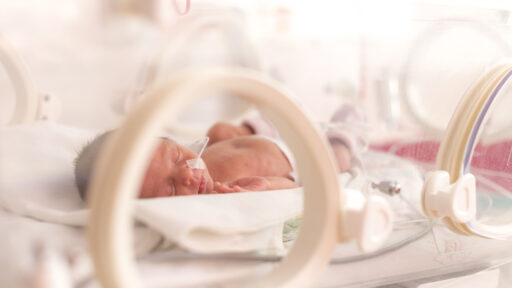What is SUID?
Each year in the United States, thousands of babies die suddenly and unexpectedly. These deaths are called SUID, which stands for “Sudden
Unexpected Infant Death.” This can include death from known causes (such as suffocation, entrapment – when a baby gets caught between two objects, like a mattress and the wall – strangulation, and intentional harm). SIDS is a type of sudden unexpected infant death that doesn’t have a known cause, even after a complete investigation.
Fast facts about SIDS:
- SIDS is the leading cause of death in babies 1 month to 1 year of age.
- Most SIDS deaths happen when babies are between 1 month and 4 months of age.
What can I do to help prevent SIDS in my baby?
There are four important things that can lower the risk of SIDS:
- Provide breast milk for your baby, if possible. Breastfeeding has many health benefits for both mother and baby, and has been associated with a lower incidence of SIDS.
- Do not smoke during pregnancy, and do not smoke or allow smoke to be around your baby. For help on how to quit smoking, call the Arkansas Tobacco Quitline at 1-800-QUIT-NOW (1-800-784-8669).
- Provide a safe sleep environment for your infant.
- Vaccinate your baby.
What should I know about safe sleep?
- Babies sleep safest on their backs. Babies who sleep on their backs are much less likely to die of SIDS than are babies who sleep on their stomachs or sides.
- Every sleep time counts. Babies should sleep on their backs for all sleep times, for naps and at night. Babies who are used to sleeping on their backs but who are then placed on their stomachs to sleep, like for a nap, are at very high risk of SIDS.
- Sleep surface matters. Babies who sleep on a soft surface, such as an adult bed, or under a soft covering, such as a soft blanket or quilt, are more likely to die of SIDS or suffocation.
How can I make sure my baby is safe when he or she sleeps?
- Always place a baby on his or her back to sleep, for naps and at night. “Back to sleep” is the safest position for all babies, including preterm babies. Remember that every sleep time counts.
- Use a firm sleep surface covered by a fitted sheet. Firm sleep surfaces include an infant mattress in a crib, bassinet, or portable play area. Do not use a car seat, carrier, swing, bouncy seat, rock and play, or other similar product as baby’s everyday sleep area. Never place baby to sleep on soft surfaces, such as on a couch or sofa, pillows, quilts, sheepskins, or blankets.
- Room share. Keep baby’s sleep area in the same room where you sleep. Your baby should not sleep in an adult bed, on a couch, or in a chair.
- Do not co-bed. Your baby should never sleep in the bed (or on a couch) with you or anyone else, including siblings. If you bring baby into your bed to feed, make sure to put him or her back in a separate sleep area when baby is finished.
- Keep soft objects, toys, crib bumpers, and loose bedding out of your baby’s sleep area. DO NOT use pillows, blankets, quilts, sheepskins, or crib bumpers anywhere in your baby’s sleep area. Evidence does not support using crib bumpers to prevent injury. In fact, crib bumpers can cause serious injuries and even death. Keeping them out of baby’s sleep area is the best way to avoid these dangers.
- Do not let your baby get too hot during sleep. You may dress your baby in one layer more of clothing than an adult would wear to be comfortable, but no more. Sleep sacks and wearable blankets are appropriate as well. Keep the room at a temperature that is comfortable for an adult.
- Give your baby a dry pacifier that is not attached to a string for naps and at night. Wait until the baby is breastfeeding well (usually 2-4 weeks) before trying a pacifier, but don’t force your baby to use it. If the pacifier falls out of baby’s mouth during sleep, there is no need to put it back in.
- Avoid products that claim to reduce the risk of SIDS and other sleep-related causes of infant death. These wedges, positioners, and other products have not been tested for safety.
- Do not use home heart or breathing monitors (unless your baby’s doctor has recommended this). If you have questions about using these monitors for other health conditions, talk with your baby’s doctor.
- Make sure everyone who cares for your baby knows the ways to reduce the risk of SIDS and other sleep-related causes of infant death. Help family members, babysitters, daycare workers—EVERYONE—reduce your baby’s risk of SIDS and ensure a safe sleep area for your baby. Share these safe sleep messages with everyone who cares for your baby or for any baby younger than 1 year of age.
Since your baby will be on his/her back a lot for sleep, it is important to give your baby SUPERVISED tummy time every day.


